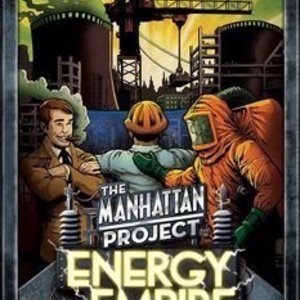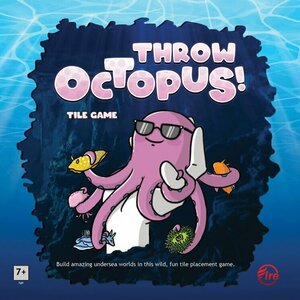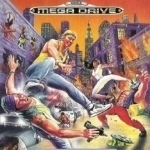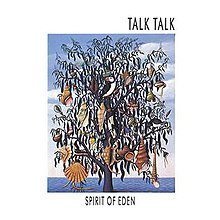Search
Search results
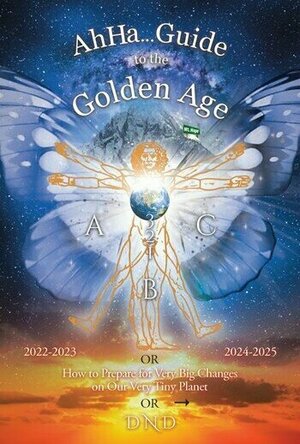
Ahha... Guide to the Golden Age: How to Prepare for Very Big Changes on Our Very Tiny Planet
Book
This Ahha...Guide to the Golden Age with the secondary title How to Prepare for Very Big Changes on...
Inspriation Personal Growth Mind Body Spirit
Matthew Krueger (10051 KP) rated The Manhattan Project: Energy Empire in Tabletop Games
Feb 22, 2021
Excellent Work Placement Game
The Manhattan Project: Energy Empire- is a excellent work placement game. I love work placement games and this one is one of them. Lets talk more about the game.
Players sit in the roles of countries trying to develop industry and energy production over a period of time roughly from the end of World War II to the present day. Throughout the game, players will construct buildings, power plants as dice, and manage the pollution in their environment with the aim of scoring the most points.
To begin play, the main board for Energy Empire is seeded with starting Building cards. These are divided into three different sectors: Government spaces, Industry spaces, and Commerce spaces. A set of pollution tokens, depending on the number of players, is also stacked on a track as the game timer.
Once the game begins, it flows continuously without rounds. Each player chooses, on their turn, to take a Work Turn or a Generate Turn.
Work Turn- During this type of turn, players must place a single worker on the main board on one of the spaces which represent activities and resources to collect. For example, this may be gaining science, steel, or purchasing oil. Afterwards, depending on which sector the player placed their worker, they can activate any previously purchased buildings, assuming they have enough workers and/or energy. Players can also activate their nation card and move up on the United Nations track, which is a pure competition for end game points. Energy is also used if a player wishes to place a worker on a space occupied by another worker. The player must place additional energy under the worker until their placement stack is larger than any other already placed.
Generate Turn: This type of turn represents the player resetting their work potential for a new set of placing workers. They do this by first potentially collecting an achievement which represents end game points for a variety of goals. They then recall any workers to their Player Mat and discard all Energy tokens. Players can also spend any oil resources to gain oil power plant dice. Finally the player rolls any or all power plant dice they have. This might include Solar/Wind (green dice), Hydro Power (blue dice, limited to one per player), Coal (black dice), and Nuclear (yellow dice). The resulting number of lightning bolts on the dice are delivered as energy tokens to the player. If a clean energy source rolled the highest cardinal number, the player does not collect pollution. If coal, oil, or nuclear dice resulted in the highest number, then the player places a single pollution token into their environment. Players continue this process one after another until a predesignated number of pollution tokens are removed from the game. Players get one final turn and then points are tallied. Players receive points for keeping their player mat free of pollution, building power plants, the United Nations track, and various points for each building constructed.
The most engaging part of the game and the main reason to seek it out, comes from the theme of global power intrigue. The building cards show off the exceptional art in the game.
Manhattan Project: Energy Empire Cards
The global impact cards for the first half of the game are green with a milder impact. Once they go red, prepare for some serious negative events. On top of this theme, the actions associated with everything in the game fit just right. The concept in game actions connect directly to the theme concept. In addition, the country actions to move up on the United Nations track also represent the tone and success formulas for those countries. The mechanism for rolling dice to gain energy and how much pollution is delivered feels just perfect given the competing goals of clean environments and high energy production.
The worker placement mechanism itself (largest stack among existing workers) is not new, but it is just the right mechanism to promote the overall feeling of energy competition. Choosing the space on which to place a worker is highly engaging and the choices tense to maximize efficiency. It is easy to connect with both strategy and tactics in this game.
Even with this engagement, it is also easy to see optimal routes for gaining points assuming opponents follow their strategies. It’s not “easy”, but it is possible to not even worry about opponents blocking a particular path to victory with low numbers of players.
Its a excellent work placement game. One i highly recordmend getting and play.
Players sit in the roles of countries trying to develop industry and energy production over a period of time roughly from the end of World War II to the present day. Throughout the game, players will construct buildings, power plants as dice, and manage the pollution in their environment with the aim of scoring the most points.
To begin play, the main board for Energy Empire is seeded with starting Building cards. These are divided into three different sectors: Government spaces, Industry spaces, and Commerce spaces. A set of pollution tokens, depending on the number of players, is also stacked on a track as the game timer.
Once the game begins, it flows continuously without rounds. Each player chooses, on their turn, to take a Work Turn or a Generate Turn.
Work Turn- During this type of turn, players must place a single worker on the main board on one of the spaces which represent activities and resources to collect. For example, this may be gaining science, steel, or purchasing oil. Afterwards, depending on which sector the player placed their worker, they can activate any previously purchased buildings, assuming they have enough workers and/or energy. Players can also activate their nation card and move up on the United Nations track, which is a pure competition for end game points. Energy is also used if a player wishes to place a worker on a space occupied by another worker. The player must place additional energy under the worker until their placement stack is larger than any other already placed.
Generate Turn: This type of turn represents the player resetting their work potential for a new set of placing workers. They do this by first potentially collecting an achievement which represents end game points for a variety of goals. They then recall any workers to their Player Mat and discard all Energy tokens. Players can also spend any oil resources to gain oil power plant dice. Finally the player rolls any or all power plant dice they have. This might include Solar/Wind (green dice), Hydro Power (blue dice, limited to one per player), Coal (black dice), and Nuclear (yellow dice). The resulting number of lightning bolts on the dice are delivered as energy tokens to the player. If a clean energy source rolled the highest cardinal number, the player does not collect pollution. If coal, oil, or nuclear dice resulted in the highest number, then the player places a single pollution token into their environment. Players continue this process one after another until a predesignated number of pollution tokens are removed from the game. Players get one final turn and then points are tallied. Players receive points for keeping their player mat free of pollution, building power plants, the United Nations track, and various points for each building constructed.
The most engaging part of the game and the main reason to seek it out, comes from the theme of global power intrigue. The building cards show off the exceptional art in the game.
Manhattan Project: Energy Empire Cards
The global impact cards for the first half of the game are green with a milder impact. Once they go red, prepare for some serious negative events. On top of this theme, the actions associated with everything in the game fit just right. The concept in game actions connect directly to the theme concept. In addition, the country actions to move up on the United Nations track also represent the tone and success formulas for those countries. The mechanism for rolling dice to gain energy and how much pollution is delivered feels just perfect given the competing goals of clean environments and high energy production.
The worker placement mechanism itself (largest stack among existing workers) is not new, but it is just the right mechanism to promote the overall feeling of energy competition. Choosing the space on which to place a worker is highly engaging and the choices tense to maximize efficiency. It is easy to connect with both strategy and tactics in this game.
Even with this engagement, it is also easy to see optimal routes for gaining points assuming opponents follow their strategies. It’s not “easy”, but it is possible to not even worry about opponents blocking a particular path to victory with low numbers of players.
Its a excellent work placement game. One i highly recordmend getting and play.
Purple Phoenix Games (2266 KP) rated Throw Octopus in Tabletop Games
Dec 18, 2021
It’s a great sign when your 5-year-old wants to play a game over, and over, and over, and over… right? Especially if you also really enjoy playing? You never really know what to expect with new games and, luckily, this one is great… especially if you have kiddos or uptight friends.
In Throw Octopus, players are underwater city planners. Of sorts. Depending on the mode of play, players will attempt to rid themselves of their hand of seascape tiles, which depict wonky underwater creatures. The first player to shed their entire hand of tiles will be the winner!
DISCLAIMER: We were provided a prototype copy of this game for the purposes of this review. These are preview copy components, and I do not know for sure if the final components will be any different from these shown. Also, it is not my intention to detail every rule in the game, as there are just too many. You are invited to download the rulebook, back the game through the Kickstarter campaign, or through any retailers stocking it after fulfillment. -T
To setup, chuck the tiles into a giant face-down pile and swirl them around to shuffle. Or try to riffle-shuffle, like, a thousand little cardboard tiles. Good luck. From the pile each player will choose eight tiles for their starting hand. Eight tiles, eight octopus tentacles. Coincidence? Also shuffle the Octopus Cards and place in a draw pile nearby. Flip over one of the tiles from the pile to serve as the starting tile. Youngest player goes first, and the game is ready to play!
On a turn, players will try to play one of their tiles to the ever-growing seascape being built on the table. Only by adding a tile from their hand to an appropriate place within the seascape can hands dwindle. At times a player will play a tile to the seascape depicting an octopus icon. After placing this tile, the active player will draw a card from the deck and either perform its action immediately or save it to be used at a later time (the card will instruct the players which to do). These cards could have players drawing more tiles, forcing other players to draw tiles, giving the active player the ability to manipulate tiles already placed in the seascape, or THROWING THE ADORABLE PLUSH OCTOPUS that comes with the game at an opponent. When the octopus is thrown at a player, they must immediately draw two tiles and skip their next turn. Should a player not have any other play, they must draw a tile from the pile and pass play to the next player.
As players are gaining and playing tiles to the board, the seascape is constantly changing, thus reflecting the real-life constantly-changing seascapes across the world. I may be reading too much into it. In any case, once a player places their final tile, they win and may challenge the players to a rematch immediately.
Recently added two-player rules allow for Speed Octopus play. In this mode, players are attempting to add to their own seascapes, and when they cannot play a card, they must discard a tile from their hand to their box top/bottom and draw a new tile from the shared pile. Once the game ends by players unable to play legally, points are scored for completed creatures in their personal board and negative points are earned for each tile in their box top/bottom. In this mode the cards and plushie are not used, but we house-ruled the usage of a Throw Octopus each time a creature was completed, just to further humiliate the other player.
Components. Again, this is a prototype copy of the game, but what we received was a box full of tiles, cards, and just the cutest little octoplushie we have ever seen. I really hope that all copies of the game come with this style of octopus, as my daughter immediately confiscated it the first few nights to sleep with her, no joke. I can only imagine the upgrades this will receive as a result of a successful Kickstarter campaign.
This is a silly, and sometimes frantic, tile laying game with take that and dexterity elements. Throwing the octopus and seeing the finished seascape at the end of the game are so satisfying. The art is great, and the concept is unique. I just know we will be playing this game for years to come. Again, if you happen to have littles in your your life or uptight friends, this is the game for you.
In Throw Octopus, players are underwater city planners. Of sorts. Depending on the mode of play, players will attempt to rid themselves of their hand of seascape tiles, which depict wonky underwater creatures. The first player to shed their entire hand of tiles will be the winner!
DISCLAIMER: We were provided a prototype copy of this game for the purposes of this review. These are preview copy components, and I do not know for sure if the final components will be any different from these shown. Also, it is not my intention to detail every rule in the game, as there are just too many. You are invited to download the rulebook, back the game through the Kickstarter campaign, or through any retailers stocking it after fulfillment. -T
To setup, chuck the tiles into a giant face-down pile and swirl them around to shuffle. Or try to riffle-shuffle, like, a thousand little cardboard tiles. Good luck. From the pile each player will choose eight tiles for their starting hand. Eight tiles, eight octopus tentacles. Coincidence? Also shuffle the Octopus Cards and place in a draw pile nearby. Flip over one of the tiles from the pile to serve as the starting tile. Youngest player goes first, and the game is ready to play!
On a turn, players will try to play one of their tiles to the ever-growing seascape being built on the table. Only by adding a tile from their hand to an appropriate place within the seascape can hands dwindle. At times a player will play a tile to the seascape depicting an octopus icon. After placing this tile, the active player will draw a card from the deck and either perform its action immediately or save it to be used at a later time (the card will instruct the players which to do). These cards could have players drawing more tiles, forcing other players to draw tiles, giving the active player the ability to manipulate tiles already placed in the seascape, or THROWING THE ADORABLE PLUSH OCTOPUS that comes with the game at an opponent. When the octopus is thrown at a player, they must immediately draw two tiles and skip their next turn. Should a player not have any other play, they must draw a tile from the pile and pass play to the next player.
As players are gaining and playing tiles to the board, the seascape is constantly changing, thus reflecting the real-life constantly-changing seascapes across the world. I may be reading too much into it. In any case, once a player places their final tile, they win and may challenge the players to a rematch immediately.
Recently added two-player rules allow for Speed Octopus play. In this mode, players are attempting to add to their own seascapes, and when they cannot play a card, they must discard a tile from their hand to their box top/bottom and draw a new tile from the shared pile. Once the game ends by players unable to play legally, points are scored for completed creatures in their personal board and negative points are earned for each tile in their box top/bottom. In this mode the cards and plushie are not used, but we house-ruled the usage of a Throw Octopus each time a creature was completed, just to further humiliate the other player.
Components. Again, this is a prototype copy of the game, but what we received was a box full of tiles, cards, and just the cutest little octoplushie we have ever seen. I really hope that all copies of the game come with this style of octopus, as my daughter immediately confiscated it the first few nights to sleep with her, no joke. I can only imagine the upgrades this will receive as a result of a successful Kickstarter campaign.
This is a silly, and sometimes frantic, tile laying game with take that and dexterity elements. Throwing the octopus and seeing the finished seascape at the end of the game are so satisfying. The art is great, and the concept is unique. I just know we will be playing this game for years to come. Again, if you happen to have littles in your your life or uptight friends, this is the game for you.
Dean (6927 KP) rated Streets of Rage in Video Games
Aug 7, 2017
Graham Coxon recommended Spirit Of Eden by Talk Talk in Music (curated)
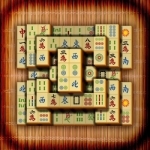
Mahjong II
Games
App
200 new stunning layouts for titans of classic Mahjong solitaire game! Game features: - two...

